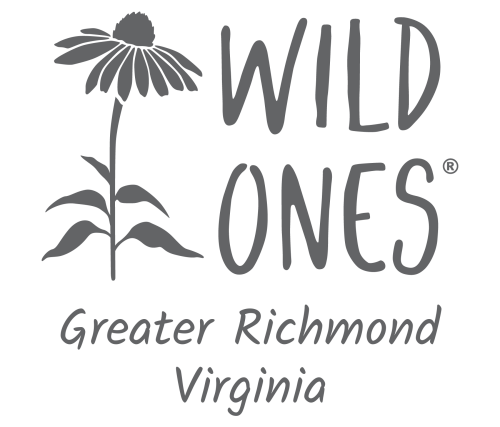
Plants have spent millenia
listening to their environment.
– Holly Haworth
The Cullowhee Native Plant Conference, held each year on the campus of Western Carolina University, gathers many of the great minds of native-plant restoration to share ideas and promote new (and sometimes old) concepts. Happily, Wild Ones Greater Richmond Virginia Chapter’s Robin Allman attended the 2025 conference. Describing the experience as “four days of nirvana for native plant and pollinator nerds,” Robin has shared the following notes to give the rest of us a glimpse of her experience!
Day 1: After a full day of hikes and/or lectures and/or craft projects, poet Holly Haworth closed the first evening with a thought piece on plants by reminding us of Robin Wall Kimmerer’s exhortation to “care for the land as if our lives … depended on it.” Holly encouraged us to further restoration by “re-story-ation,” using the stories and names of different plants to divine their purposes in the natural world and connect with their emotional resonance to the human world. Latin names are great (and very useful)–but how many of us have heard the story behind the name, “Whippoorwill flower”? (There’s something to Google!)
Day 2: The second day of the conference brought us Dr. Doug Tallamy, who answered selected questions from his new book, How Can I Help? Dr. Tallamy talked about whether to choose plants from naturally warmer climates to plant in climate changing gardens further north. His thoughtful advice was against that thinking, for the simple reason that you would be moving those plants away from their locally-dependent species. He felt it was better to promote local ecotypes that will adapt to climate change. Dr. Tallamy also reminded us that the chances of contracting a mosquito-borne illness is about 1/197 million in the United States, and referenced studies that showed when honeybees were introduced to a new area, they reduced nectar availability by 60%, pollen availability by 30%, and native bee populations by 80%!
Dr. Annabel Renwick had the unenviable task of following Dr. Tallamy, but intrigued the audience with her approach to re-creating native grassland in the Sarah P. Duke Gardens in Durham, North Carolina. She also gave great tips for fitting native plants into a typical home landscape, patio, or even porch. John Marion talked about the “Best Underused yet Wonderful Natives”; however, it did seem that he was enthusiastic about using every native he lovingly discussed! Cecile Ramsey of Bat Conservation International taught us that if you want to attract bats, the best way is to plant for moths. Dr. Drew Lanham, certified wildlife biologist and author of The Home Place: Memoirs of a Colored Man’s Love Affair with Nature, urged us to think very carefully about how we speak about plants that come from other lands and perhaps are unwanted where they thrive. He mused, “What is native enough?” and suggested “ecologically compatible” as perhaps a gentler term. This is a topic that will require some deep thinking and care. Ending the day was Dr. Jim McCormac’s lecture on “Mysterious Moths: Growing the Darker Side of Butterflies.” Dr. McCormac extolled the virtues of moths and stressed their centrality to the environment. And because we were at “Plant Camp,” many of us went out to search for moths on the campus.
Day 3: The third day brought more hikes, if you signed up early, or workshops if you didn’t. I was lucky to get into “Covering Ground with Native Plants” with Preston Montague (designer of the Greensboro, North Carolina, Native Garden Design for Wild Ones, viewable at https://nativegardendesigns.wildones.org/designs/greensboro/), and a workshop with Shannon Currey, horticultural educator for Izel plants. We learned some design basics, then worked on a plan. The surprise of the day, however, came after lunch: a presentation called “Many Hands: Collaboration in Public Horticulture, with Thomas Woltz and Brad Odom.” Sleeper title, but a presentation that earned a long standing ovation for the vision and care that they brought to the projects they shared with us! This was a tough act to follow, but by evoking wizards and a dry sense of humor, Dr. Alan S. Weakley, lead of the Flora of the Southeastern United States, urged us to use the Flora. Their goal is to make it as easy as possible for the most people possible to learn basic information about the 11,000 species of plants around us. Because, in the end–
“We will conserve only what we love,
we will love only what we understand,
and we will understand only what we are taught.”
–Baba Diom
